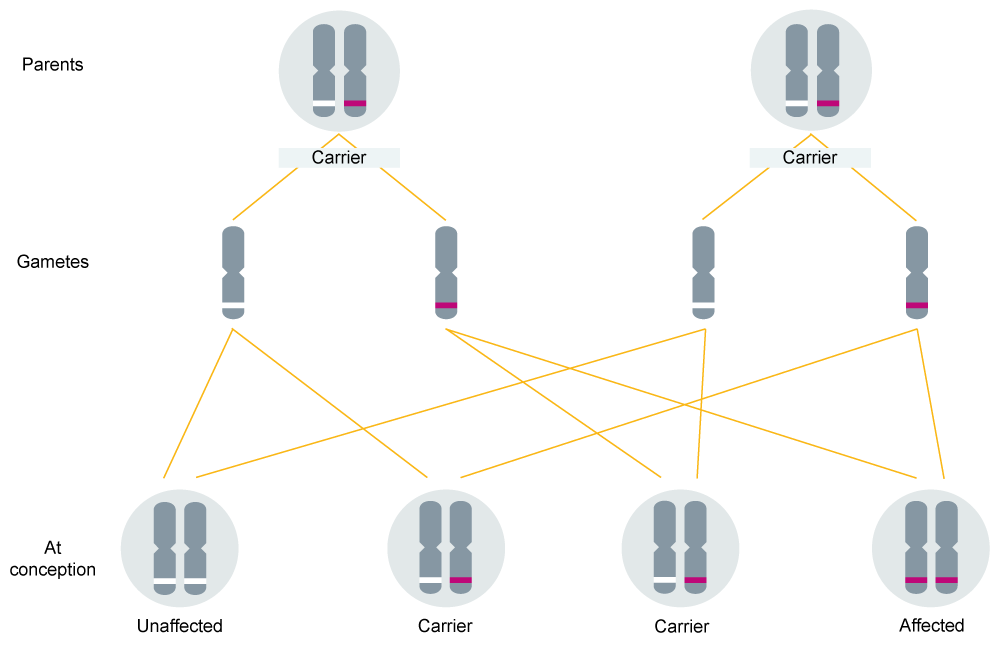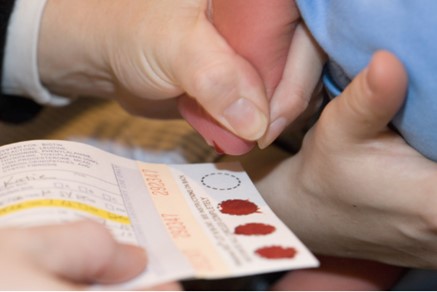Newborn blood spot screening
Newborn blood spot screening is offered to parents to test their baby for one of nine rare but serious health conditions. Early diagnosis and treatment can improve the health of affected individuals, as well as prevent complications including severe disability and death.
Conditions
The newborn blood spot (NBS) screening programme enables early identification, referral and treatment of babies with any of the following conditions:
- cystic fibrosis (CF);
- congenital hypothyroidism (CHT);
- glutaric aciduria type 1;
- homocystinuria;
- isovaleric acidaemia;
- maple syrup urine disease;
- medium-chain acyl-CoA dehydrogenase deficiency (MCADD);
- phenylketonuria; and
- sickle cell disease (SCD).
A pilot evaluation currently running in some areas of England is screening specifically for a group of rare conditions that cause a newborn to be susceptible to infections. Severe combined immunodeficiency (SCID) is caused by gene variants that are involved in the development and function of the immune system.
Inheritance patterns
Most of the conditions being tested for during NBS screening are inherited in an autosomal recessive pattern (see figure 1).
Figure 1: Autosomal recessive inheritance

This means that any findings may have implications for other family members. Patients can speak to their midwife or GP about this and, if required, can be referred to a genomic counsellor for further support and testing.
Counselling patients
It is the health professional’s responsibility to explain to parents and offer screening for their baby.
This conversation should be initiated during the antenatal period. It is recommended that couples are asked if there is a family history of any of the nine conditions; if history is identified, a care plan can be put in place prior to the birth. Providing this information during the antenatal period also allows parents appropriate time to consider their options and ask questions.
The health professional should provide parents with the guidance Screening tests for you and your baby, which is available in 13 languages.
Parents are asked for verbal consent for NBS screening. They can opt out of testing for SCD, CF and CHT individually, but testing for the six inherited metabolic diseases is completed as a group.
Babies who are premature or are admitted to a neonatal unit will have additional recommendations for screening.
Taking the sample
NBS screening is a blood sample taken from the child’s heel (see figure 2).
Figure 2: Taking the blood sample for NBS screening

Image taken from NHS Health A to Z: Newborn blood spot screening FAQs. Licensed under the Open Government License v3.0.
The optimum time for testing is on day five following birth; however, children are eligible for screening up until their first birthday for every condition except CF, for which the test is no longer reliable after eight weeks of age. Samples should be sent to the screening laboratory for analysis on the same day that they are taken.
For further information about NBS sampling, please read through the sampling guidelines. You can also follow guidelines to ensure you take a good-quality sample.
Results
Parents usually receive the results of the NBS test within six weeks. If a condition is suspected, the parents will be contacted as soon as possible so that the child can have further testing or treatment immediately. The results must be given by an appropriately trained and knowledgeable clinician, and parents should be provided with national guidance about screening for the nine conditions.
Guidance on the process that follows a positive result for each condition can be found in the resource list below.
Resources
For clinicians
- BMJ Learning: Antenatal and newborn screening
- Great Ormond Street Hospital for Children NHS Foundation Trust: Severe combined immunodeficiency (SCID)
- Gov.uk: Newborn blood spot sampling guidelines: quick reference guide
- Gov.uk: New resources to help improve quality of samples taken in NHS newborn blood spot screening
- Gov.uk: Newborn blood spot screening standards valid for data collected from April 2021
- NHS Newborn Blood Spot Screening Programme: Community midwife discusses how she reduced her avoidable repeat rate
- NHS Newborn Blood Spot Screening Programme: Online course collection
- Public Health England 2016: Guidelines for newborn blood spot sampling (PDF, 50 pages)
- St George’s University of London: Genetic inheritance for the pregnancy pathway: A practical guide for clinicians
For patients
- Gov.uk: Screening tests for you and your baby
- NHS: Blood spot tests: An easy guide to screening tests for your new baby (PDF, 12 pages)
- NHS: Newborn blood spot screening FAQs
- NHS: Newborn blood spot test